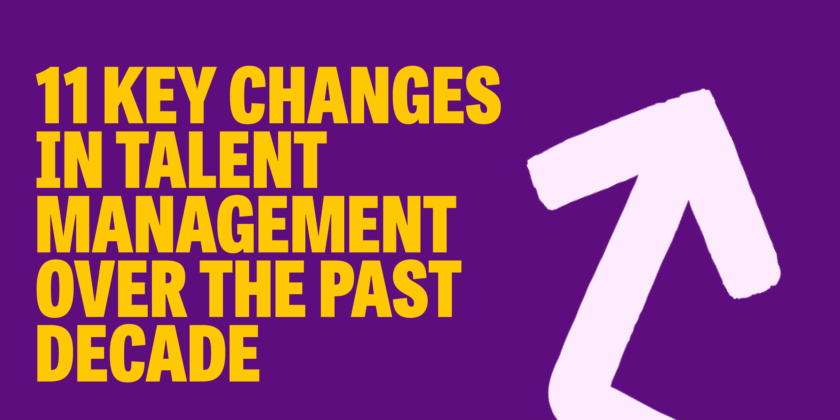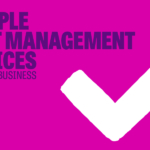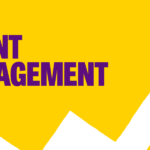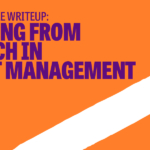1. The Rise of the Gig Economy and Flexible Workforce
The traditional full-time employment model has been disrupted by the surge in freelancers, contractors, and project-based workers. Organisations now manage hybrid workforces that blend permanent employees with gig workers, requiring new approaches to onboarding, engagement, and performance management for non-traditional workers.
This shift has fundamentally changed organisational design and operating models, moving away from rigid hierarchical structures toward more networked, agile frameworks that can accommodate diverse working arrangements and project-based collaboration.
LTT Top tip: Our experience in designing flexible workforce strategies has shown that successful gig economy integration requires reimagining traditional org charts, and creating new pathways for non-permanent talent to contribute meaningfully to organisational goals.
2. Multi-Generational Workforce Management
With five generations now working side by side (from Baby Boomers to Gen Z), talent management has evolved to address vastly different communication styles, career expectations, and work preferences. This has necessitated more personalized approaches to motivation, feedback, and career development.
The emphasis on learning in the flow of work has become particularly crucial, as different generations prefer different learning modalities – from formal training programs to microlearning modules that can be consumed on-demand. Inclusion by design ensures that these diverse learning preferences are accommodated from the outset, rather than retrofitted later.
3. Emotional Intelligence as a Leadership Imperative
EQ has moved from a “nice-to-have” to a critical leadership competency. Organisations now prioritise emotional intelligence in hiring, development, and succession planning, recognising its impact on team performance, employee retention, and organisational culture.
This shift directly supports trust, transparency, and employee voice initiatives, as emotionally intelligent leaders are better equipped to create psychological safety and encourage open dialogue across all levels of the organisation.
LTT Connection: Our leadership development programs consistently show that EQ-focused interventions create measurable improvements in team engagement and organisational trust scores.
4. Remote and Hybrid Work Revolution
The shift from office-centric to location-flexible work has fundamentally changed how we recruit, onboard, manage performance, and build culture. Talent management now requires digital-first strategies and new metrics for measuring productivity and engagement.
This transformation has accelerated the move toward networked organisational structures that prioritise connection and collaboration over physical proximity. It has also elevated the importance of trust and transparency as foundational elements of remote team management.
5. AI-Powered People Analytics and Technology Integration
AI is no longer just a tool for automating HR tasks — it’s reshaping the very fabric of organisations. The rise of intelligent systems is challenging leaders to redesign how work gets done, redefining roles, and reconsidering what uniquely human skills need to be prioritised. Talent management must now help navigate a delicate balance: integrating AI to enhance performance while preserving empathy, ethics, and creativity at the core of culture.
Leaders are grappling with questions around trust, transparency, and responsibility — who makes decisions, and how? Meanwhile, employees are adapting to hybrid teams that increasingly include not just people, but algorithms. This is shifting the expectations around learning, collaboration, and even career development.
The talent strategies of tomorrow won’t just focus on how people use AI, but how they co-exist with it — designing workflows, team structures, and organisational norms that maximise the strengths of both human and machine intelligence. Success lies not in the adoption of AI tools, but in fostering an adaptive culture that can evolve with them.
6. Personalised Employee Experience
The one-size-fits-all approach has given way to individualised career paths, customized benefits packages, and personalised learning experiences. Talent management now focuses on creating unique employee journeys rather than standardised programs.
This personalisation extends to learning in the flow of work, where employees can access relevant development opportunities precisely when they need them. Inclusion by design ensures that personalisation doesn’t create barriers but instead opens up multiple pathways for success that accommodate different working styles, cultural perspectives, and accessibility needs.
If you want some support, our employee journey mapping methodology helps organisations identify personalisation opportunities that drive engagement while maintaining operational efficiency.
7. Continuous Performance Management
Annual performance reviews have largely been replaced by ongoing feedback, regular check-ins, and real-time performance conversations. This shift emphasizes development over evaluation and creates more agile talent management processes.
This evolution supports employee voice by creating more frequent opportunities for two-way dialogue and feedback. It also enables talent mobility by identifying development opportunities and career moves in real-time rather than waiting for annual cycles.
LTT Top Tip Provide your managers with practical tools for conducting meaningful development conversations that drive both performance and engagement.
8. Skills-Based Hiring and Development
The focus has shifted from credentials and experience to demonstrable skills and potential. Organisations now prioritise capability over pedigree, leading to more inclusive hiring practices and emphasis on continuous reskilling and upskilling.
This approach naturally supports internal talent marketplaces where employees can discover opportunities based on their skills and interests rather than traditional career ladders. It also embeds inclusion by design by removing barriers that may have previously excluded talented individuals from opportunities.
Check out our skills-based assessment tools help organisations identify and develop talent based on capability and potential, creating more equitable pathways for career advancement.
9. Mental Health and Wellbeing Integration
Employee wellbeing has become a central component of talent management, with organisations implementing comprehensive mental health support, stress management programmes, and work-life integration initiatives as core retention and engagement strategies.
Wellbeing initiatives must be designed with trust and transparency at their core, ensuring employees feel safe to access support without fear of stigma or career impact. Inclusion by design ensures that wellbeing programs accommodate different cultural approaches to mental health and work-life balance.
10. Purpose-Driven Talent Attraction
Employees, particularly younger generations, increasingly seek meaningful work aligned with their values. Talent management now emphasises organisational purpose, social impact, and values alignment as key factors in attraction, engagement, and retention strategies.
This trend is closely linked to employee voice initiatives, as purpose-driven employees want to actively contribute to organisational direction and impact. It also requires transparent communication about how individual roles contribute to broader organisational goals.
LTT Top Tip: Download our EVP toolkit which has lots of useful hints and tips to get you started
11. Organisational Design & Operating Models
The shift from hierarchical to networked or agile structures represents perhaps the most fundamental change in how organisations operate. Traditional command-and-control models are giving way to dynamic, responsive structures that can adapt quickly to changing market conditions and employee expectations.
LTT Connection: Our organisational design assessments help leadership teams identify structural changes that can improve agility while maintaining necessary governance and accountability.
Emerging Focus Areas Shaping the Future
Learning in the Flow of Work & Microlearning
The future of workplace learning is increasingly embedded in daily work activities rather than separate training events. Microlearning modules, just-in-time resources, and peer-to-peer knowledge sharing are becoming the norm, requiring new approaches to content creation and delivery.
LTT Connection: Our learning architecture reviews help organisations design development ecosystems that support continuous learning without disrupting productivity.
Talent Mobility & Internal Marketplaces
Progressive organisations are creating internal opportunities for employees to explore different roles, projects, and career paths. This approach not only improves retention but also builds organisational resilience by developing multi-skilled, adaptable talent.
LTT Connection: Our career pathways frameworks provide practical guidance for creating internal marketplace systems that benefit both employees and organisational capability.



